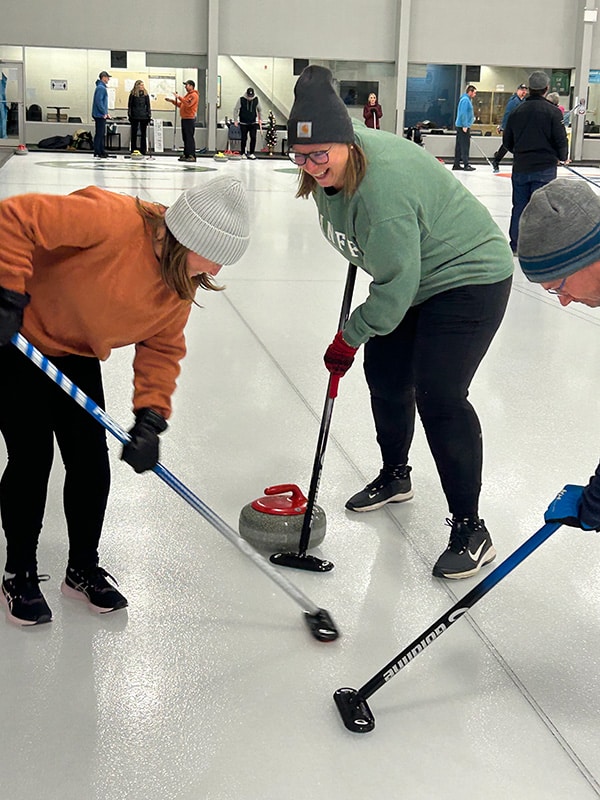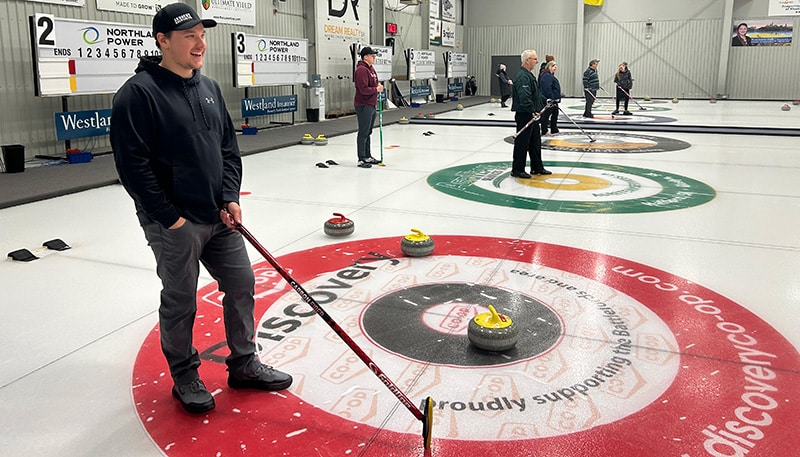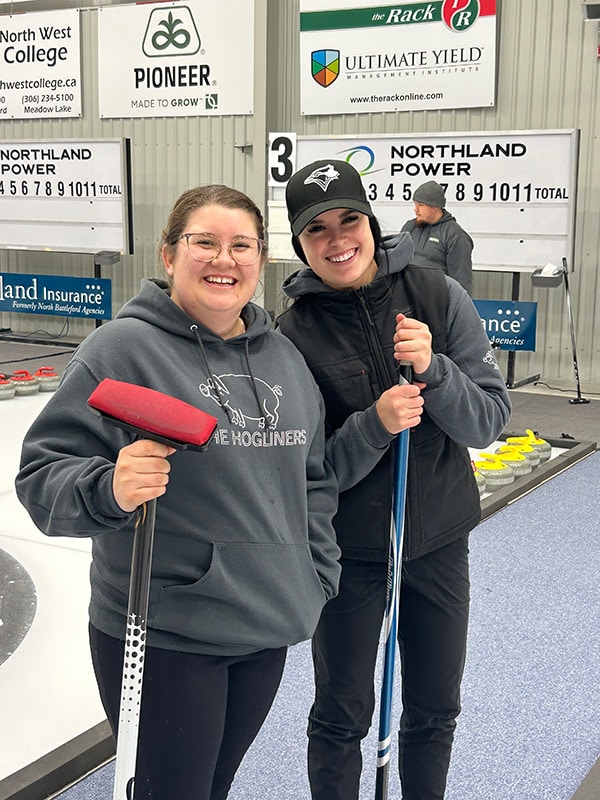Less is more!

Low commitment curling leads to big results in North Battleford
When it comes to running a profitable curling facility, less is more.
It’s an old adage, but Brandon Hall – the Twin Rivers Curling Club manager – uses it as a guiding principle to contribute to what is becoming a banner year for the curling facility in North Battleford, Sask. The club already has a 42 per cent increase in membership from last season.
“Last year, we had 190 members. This year, we’re at 270 and counting. I think we’ll hit about 290 members by the end of the season,” Hall said.
That momentum has made curling one of the hottest ticket items in the Saskatchewan city, located 135 km northwest of Saskatoon. While Hall jokes that the sharp increase in members makes it a challenge to accommodate everyone, he wouldn’t have it any other way. He hopes to continue seeing that number rise through his facility’s approach to welcoming newer and younger members to curling.

“Our club’s junior coordinator, Matt Taylor, and I felt there was a bit of a gap here with getting new people in the door. I know we were dropping about 10 members a year, especially after COVID. We lost a huge chunk of new people coming in the door. In my opinion, at a club level, competitive niches are dropping a little bit and the younger generations are more focused on having fun and having a good time than getting too serious about the sport,” Hall said.
Hall’s reasoning became the foundation of his ‘less is more’ manner of mind. Low-commitment curling focused on recreation and fun is instrumental in bringing new people to the club.
The Twin Rivers Curling Club’s new social league runs for six weeks at a time. The league targets beginners and people with no curling background, providing a fun and energetic experience focusing on socializing with others in a judgement-free area.
Hall compares it to glow bowling. Years ago, people would have thought it was crazy to turn off the lights in a bowling alley, blast some music and play. Now, that’s the atmosphere you can find any evening at an alley. Hall is bringing that atmosphere to the curling rink.
“We play music out there, and we play it quite loud. People question things like ‘What about hearing the line call?’. But the way I look at it is that you’re not necessarily coming out to curl. You’re going for a night out, and you happen to be curling – that’s the activity,” Hall said. “You need to focus more on fun than structure. We’ve had teams that play with shuffleboard rules – who can throw closest to the back line – and they ask me, ‘Is that okay?’. As long as it’s safe and you’re having fun, it doesn’t matter. They’re on the ice, playing, in the building and having fun.”

Every six weeks, the league resets, meaning individuals can commit to as much or as little curling as they want. Because of this, more people new to the sport are more likely to try it out for a trial six-week period instead of committing to an entire 20+ week schedule. At the start of every six-week season, the facility hosts an open house, allowing people new to the sport to learn the basics of the game and how to slide and sweep before the Social League gets underway.
“It’s free of charge, and we help them get rolling so they don’t have to worry about the first day playing,” Hall said. “They can take in a little bit of instruction if they’re new, or if they haven’t curled in years, they can come in and practice a little bit.”
Of all participants in the league, 36 were curling for the first time in their lives. The six-week commitment was the key factor because they could stop after that if they didn’t like it.
“We knew they would stay once they got going, though,” Hall said.
The league has also brought in a much sought-after younger crowd. The average age in the Social League is about 28 years old, whereas in other leagues, it is closer to 58. It has also been a welcoming environment for women to try the sport in a fun and judgement-free area, with roughly 65 per cent of the participants female.
As a club manager, it’s made Hall think about the importance of having an entry point into the facility for everyone, and the new social league has untapped potential. With word spreading around the Battlefords about the new league, more people want to try it out once the second and third mini-seasons get underway.
The league has also been an excellent feeder into other aspects of the league. Members from the social league go upstairs to the lounge afterwards for food and drinks, along with opportunities to win prizes, thanks to the league’s sponsorship with the local FFUN Dodge dealership. This new league has also streamed its new members into other facets of the club, who are now competing in weekend bonspiels and registering for other leagues at the Twin Rivers Curling Club.
With a low-cost point of entry – $99 for six weeks of curling – new curlers are lining up for a chance to try, and the numbers are only growing, which is good news for the 13-year-old facility with operating costs which rise every year. Teams that signed up for the first sessions of the league are already clamouring to sign up for the second and third sessions of the social league this season, meaning the possibilities of expansion are endless.




